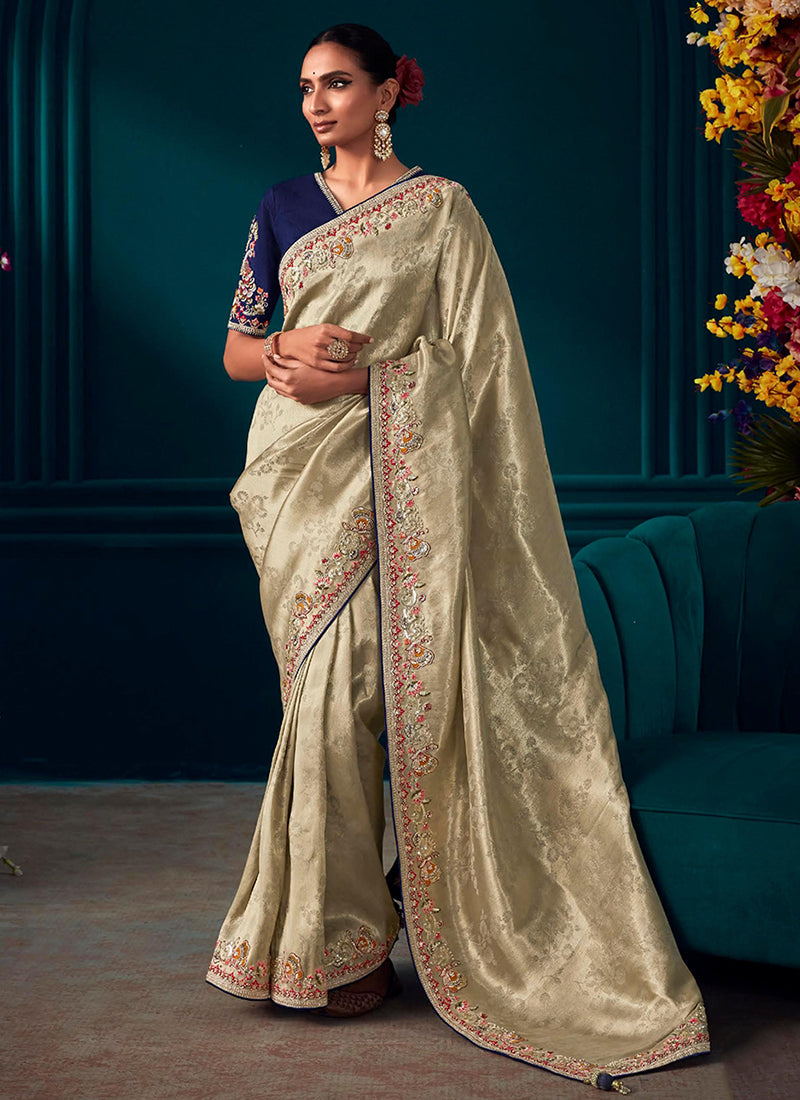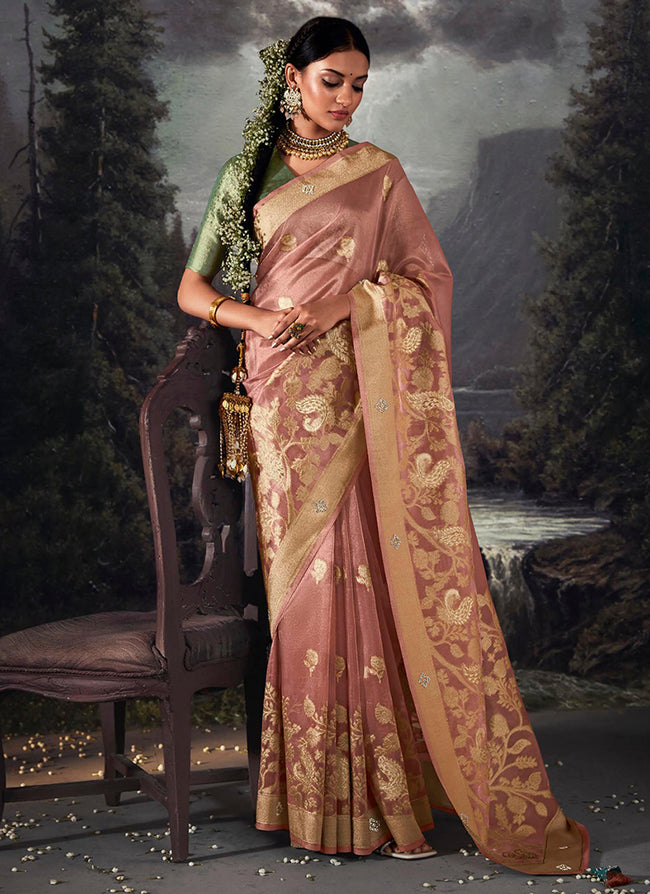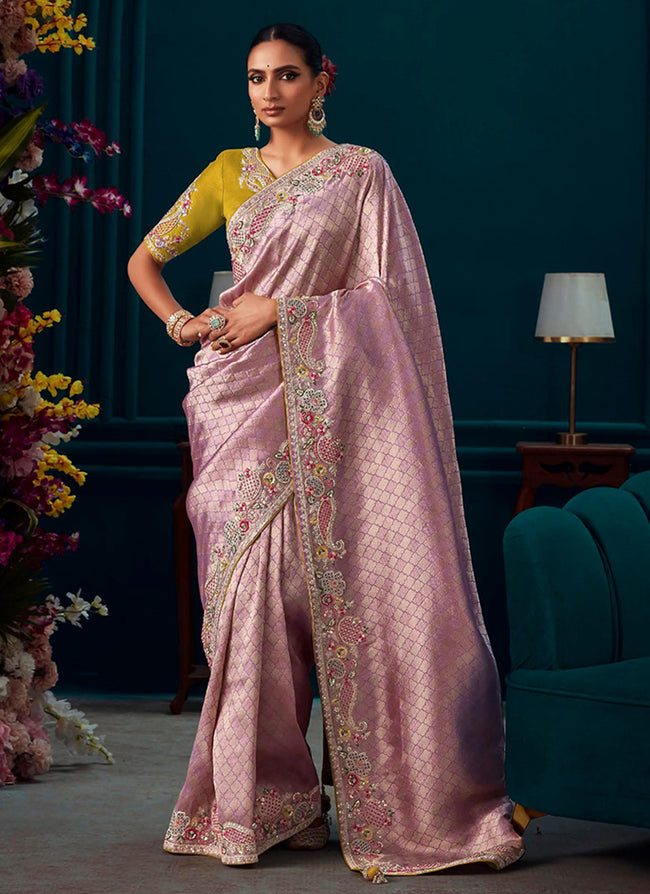In the world of Indian textiles, Banarasi silk stands as a beacon of luxury, tradition, and artistry. Originating from the ancient city of Varanasi, also known as Banaras, this exquisite fabric has been a symbol of opulence and craftsmanship for centuries. This article delves into the rich heritage of Banarasi silk, exploring its history, intricate weaving techniques, cultural significance, and the factors that make it one of the most coveted fabrics in the world.
The History of Banarasi Silk
The tradition of weaving Banarasi silk can be traced back to the Mughal era, around the 16th century, when the art of silk weaving was introduced to Varanasi. The city, renowned for its spirituality and learning, soon became a hub for weaving, and Banarasi silk emerged as a symbol of royal splendor.
During the Mughal period, silk weaving artisans from Persia were brought to India to create elaborate designs for the Mughal court. Their influence led to the development of intricate patterns and techniques that characterize Banarasi silk to this day. Over the centuries, the art form has evolved while maintaining its rich heritage and association with luxury.
The Weaving Process
The creation of a Banarasi silk saree is a complex and labor-intensive process that showcases the skill and artistry of the weavers. Here's a closer look at the stages involved:
1. Silk Production
The process begins with the cultivation of silkworms, which produce the raw silk threads. The silk is then carefully harvested, spun into yarn, and dyed to achieve the desired colors.
2. Designing and Pattern Making
Designing Banarasi silk involves creating intricate patterns, often inspired by Mughal motifs, floral designs, and geometric patterns. Traditional designs are hand-drawn and meticulously transferred onto the weaving loom.
3. Weaving
The weaving process is carried out on traditional handlooms, known as "jamdani" looms. The use of gold and silver threads in the weave is a hallmark of Banarasi silk. Skilled artisans weave these threads into elaborate patterns, creating a rich, textured fabric. This process can take several weeks to months, depending on the complexity of the design.
4. Finishing Touches
Once woven, the saree undergoes a finishing process that includes washing, pressing, and sometimes adding additional embellishments. The final product is a luxurious and vibrant fabric that showcases the artistry and craftsmanship of the weavers.
Distinctive Features of Banarasi Silk
Banarasi silk is renowned for its distinct features that set it apart from other types of silk fabrics:
1. Intricate Zari Work
One of the defining characteristics of Banarasi silk is its intricate zari work, which involves weaving gold and silver threads into the fabric. This embellishment adds a luxurious sheen and enhances the overall richness of the saree.
2. Elaborate Patterns
Banarasi silk sarees are known for their elaborate and detailed patterns, which often include traditional motifs such as paisleys, floral designs, and intricate geometric shapes. These patterns are not only visually stunning but also carry cultural and symbolic significance.
3. Luxurious Texture
The texture of Banarasi silk is both smooth and rich, with a soft drape that enhances its elegance. The weight and sheen of the fabric contribute to its luxurious feel, making it a preferred choice for special occasions and ceremonies.
Cultural Significance
Banarasi silk holds a special place in Indian culture, particularly in the realm of traditional ceremonies and celebrations. It is a popular choice for weddings, festivals, and other significant events due to its association with royalty and grandeur. The sarees are often passed down through generations as family heirlooms, symbolizing both heritage and continuity.
Modern Trends and Sustainability
In recent years, the Banarasi silk industry has seen a revival as designers and fashion enthusiasts seek to blend traditional techniques with contemporary styles. Modern Banarasi silk sarees often feature updated designs and innovative draping styles, making them accessible to a new generation of buyers.
However, the industry also faces challenges related to sustainability and ethical practices. Efforts are being made to ensure that the weaving processes are environmentally friendly and that artisans receive fair wages for their work. This balance between preserving tradition and embracing modern values is crucial for the future of Banarasi silk.
Conclusion
Banarasi silk is more than just a fabric; it is a testament to centuries of craftsmanship, tradition, and cultural heritage. From its origins in the Mughal era to its status as a symbol of luxury, Banarasi silk continues to captivate and inspire. By exploring its rich history and intricate details, we gain a deeper appreciation for this exquisite textile and the artisans who keep its legacy alive.
As we celebrate the beauty and elegance of Banarasi silk, we also acknowledge the importance of preserving its heritage and supporting the skilled craftsmen who bring these luxurious creations to life.













